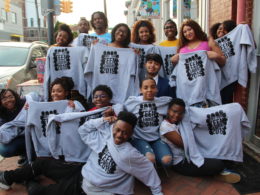The day a baby is born should be joyous, one without fear or trepidation. But sadly, the data suggests that is not always the case. Statistics about Black maternal health and postpartum outcomes are concerning and often paint a bleak picture. But Birth in Color RVA is hoping to fix that.
According to the CDC, Black mothers are 4-5 times more likely to endure a pregnancy-related death than white mothers. And Black infants? The mortality rate within the first year of life is 10.97 per every 1,000 births, which is more than double for other demographic groups.
There have been many national studies and research into the healthcare disparities Black men and women face, which is why groups like Birth in Color RVA work hard all year to ensure policy is written and legislation is codified to help break down healthcare barriers and increase healthy, positive outcomes.
Supporting mothers before, during and after childbirth

We spoke with the executive director of Birth in Color RVA, Kenda Sutton-El, to learn more about the organization and how it supports the birth journey. In addition to her executive director responsibilities, Sutton-El is also a doula, a birth worker that empowers birthing people to make informed decisions throughout the prenatal, birthing and postpartum periods. She also plays an important role in the community from an advocacy standpoint.
“I’m an executive director, a doula, a certified lactation consultant, but I also work on policy, legislation and a series events like Black Maternal Health Week, Black Breastfeeding Week and Maternal Mental Health Week,” said Sutton-El.
Sutton-El is at the helm of Birth in Color RVA, where she works with a dozen other advocates and doulas to help provide services like community doula services, lactation consultation, hypnobirthing classes, nutrition education, massage, infant CPR and other related educational events.

Birth advocates uplifting birth advocates on Facebook. Sutton-El’s work is now illuminated in billboard form in a campaign cosigned by Virginia Department of Health.
An added layer to Birth in Color RVA’s work, during the pandemic, the team had to adjust to the new rules and regulations surrounding births – particularly in the early days of the COVID-19 pandemic.
“At first, it affected our work because they weren’t allowing doulas in the hospital,” said Sutton-El. “Doulas are now part of the care team; we advocated to be allowed in the hospital, but on the other side, we have all these pregnant mamas, home births and birth centers definitely picked up, and we only have two centers and only a couple of midwives that work in them.“
She also told us that while some hospitals allowed doulas, others didn’t accept them as part of the care team, so many families had to FaceTime their doula in the labor room for support.
But, let’s face it, that’s just not the same.
Fighting disparities through reform
As we mentioned at the top of this piece, there are blatant health disparities when you look at the birth experience of a white mother and a Black mother. Not only are outcomes vastly different, but there have even been studies that show women of color are less likely to receive pain management like an epidural compared to white mothers.
“Our job is to make sure all pregnant women know their rights and their choices during childbirth,” said Sutton-El. “Families need to be properly educated to make informed-consent decisions, deciding what they want in childbirth – giving them options supported by evidence.”
There has been a lot of research about birth outcomes when a doula is present. Research has shown that working with a doula shortens the length of labor, lowers the chance of needing a C-section, decreases the chances of induced or augmented labor and has a higher rate of satisfaction from the birthing individual. Which is why the policy development surrounding the access of doula services is so important.
“We advocated for the doula reimbursement bill, which allows people who have Medicaid to work with a doula and the doula will get paid,” said Sutton-El. “Additionally, we’ve been part of several breastfeeding bills, a couple of reproduction bills, 12-month birth control, infant mortality and review and one for incarcerated individuals – that just passed.”
Birth in Color RVA works with several organizations, like the ACLU of Virginia, National Women’s Law Center and the Blue Ridge Abortion fund to assess the policies leading up to and during a General Assembly session and decide which ones it will respond and advocate accordingly.
How the community can get involved
It takes a village, right? Not just in the policy and advocating departments but educating parents and preparing for birth – and what to do after a baby is earthside. In addition to the services Birth in Color RVA provides, it also accepts donations to support families it serves.
“We always take any baby items and baby wearing things, and we also host community baby showers, so diapers, wipes, Boppies – anything mom and baby might need,” said Sutton-El. “We also make self-care boxes to remind them to take care of themselves. There is a mental health component, ‘Open when you’re hungry,’ ‘Open when you’re anxious.’ That gives them motivation to keep going.”
To learn more about Birth in Color RVA and to donate, click here. You can also follow it on Facebook, Twitter or Instagram.










